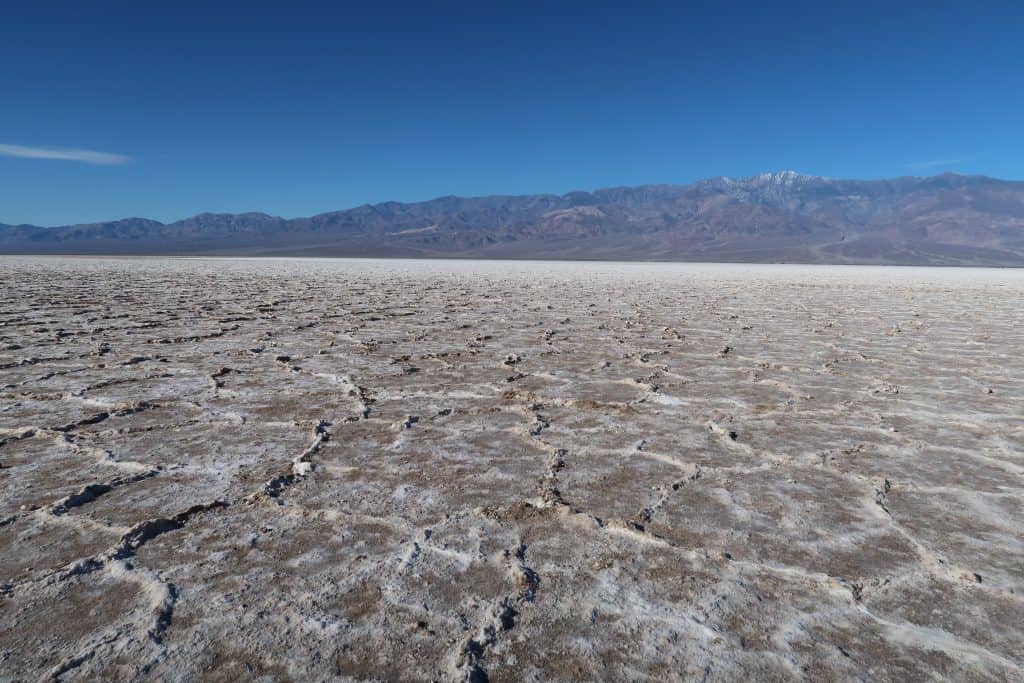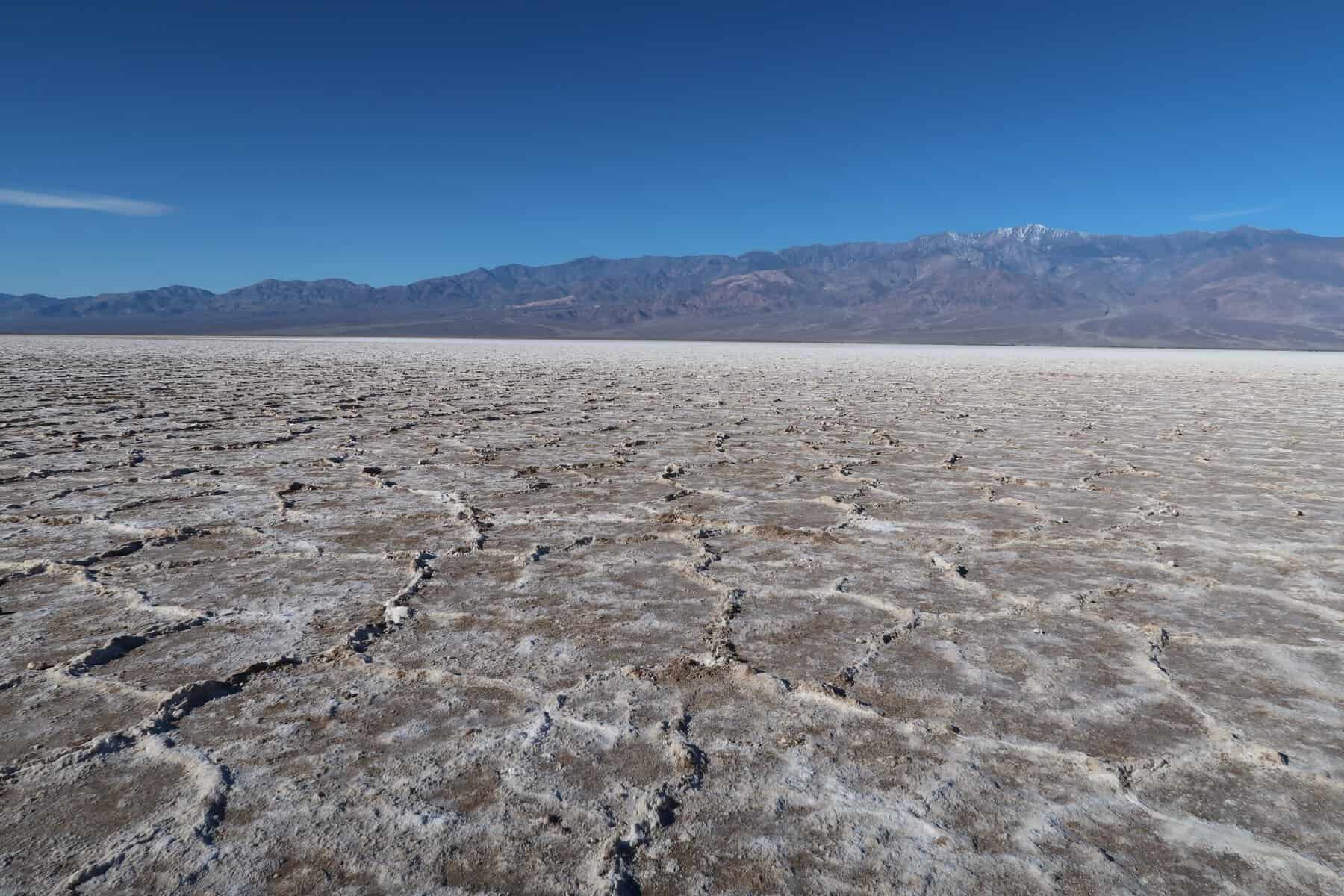Death Valley National Park is renowned for its extreme heat with temperatures often reaching over 100 degrees Fahrenheit even in the winter months. But what causes this intense heat, and why is Death Valley National Park so hot?
Death Valley National Park is a geological wonderland. It is home to some of the most stunning and unique landscapes on Earth! From towering mountains and colorful rock formations to vast salt flats and winding canyons, the park’s beauty is a testament to the incredible forces of nature that have shaped it. Read on to explore the fascinating geological history of Death Valley National Park and exactly what makes it so hot!

Geological History:
The geological history of Death Valley National Park spans over 1.7 billion years. It began with the formation of ancient rock formations deep beneath the earth’s surface. The park is located within the Basin and Range Province. This is a large region of the western United States that has been shaped by a complex series of tectonic forces over millions of years.
Around 1.7 billion years ago, the region that is now Death Valley was part of a sea that covered much of what is now North America. Over time, the sediments and marine life that accumulated in this sea were compressed and uplifted by tectonic forces. This uplift formed the oldest rocks in the park: the Precambrian basement rocks. These rocks are some of the oldest known rocks in North America, and they are composed of granite, gneiss, and schist.
Over time, the tectonic forces that had uplifted the Precambrian rocks began to stretch and pull the earth’s crust. This process created rift valleys and mountain ranges. It continued for millions of years eventually forming the network of mountain ranges and valleys that make up the Basin and Range Province.
Around 30 million years ago, a massive volcanic eruption occurred in the region that is now the park. It spewed millions of tons of ash and rock into the air. This eruption, known as the Tuff Eruption, left a layer of ash and pumice up to 600 feet thick.
Over time, the forces of wind and water began to erode the landscape. Erosion carved the canyons, valleys, and peaks. This process continues today.
The Heat
The park is situated in a valley that’s surrounded by mountains. The valley floor is made up of salt flats and sand dunes. This geography contributes to the park’s extreme temperatures in several ways:
- Low elevation: The valley is situated at a low elevation; thus, it experiences higher pressure. The air contracts and heats up when at this high pressure.
- Heat reflection: The salt flats and sand dunes in the valley floor reflect sunlight and heat. This contributes to the overall temperature in the park.
- Heat retention: The rocks and soil in the valley floor absorb and retain heat. This can cause the temperature to continue to rise even after the sun has set.
The Meteorology
Meteorological factors also contribute to the extreme heat in Death Valley National Park:
- High-pressure systems: Death Valley National Park is often situated under a high-pressure system. This causes the air to sink and compress. Compression heats up the air and contributes to the extreme temperatures.
- Inversion layers: Inversion layers occur when a layer of cool air is trapped beneath a layer of warm air. This phenomenon is common in desert environments and can contribute to temperature extremes.
- Dry air: The lack of moisture in the air means that heat can accumulate more easily. This, too, contributes to the overall temperature in the park.
Climate Change
While the unique geology and meteorology of the area are the primary factors contributing to the extreme heat in Death Valley National Park, climate change may also be playing a role. According to the National Park Service, the average temperature in the park has risen by 3.4 degrees Fahrenheit over the past century.
Safety Precautions to Take
Given the extreme temperatures in Death Valley National Park, it’s crucial to take safety precautions when visiting the area. Here are some tips to help you stay safe:
Drink plenty of water: The lack of moisture in the air means that it’s easy to become dehydrated. Be sure to drink plenty of water, and carry water with you at all times!
Dress appropriately: Wear lightweight, light-colored clothing that will help regulate your body temperature. Be sure to wear a hat and sunscreen to protect yourself from the sun.
Avoid the hottest parts of the day: Schedule activities for early morning or late afternoon when the temperature is cooler. Consider visiting during cooler seasons.
Stay on designated trails: The extreme heat and rugged terrain can be dangerous. Getting lost or injured can be life-threatening.
Know your limits: If you start to feel dizzy, lightheaded, or nauseous, take a break and rest in a shaded area. Don’t push yourself too hard. Know when it’s time to call it a day.
Plan ahead: Before visiting Death Valley National Park, be sure to check the weather forecast, and plan your activities accordingly. As we always advise, it’s a good idea to let someone know where you’re going and when you plan to return.
The extreme heat in Death Valley National Park is caused by a combination of unique geology and meteorology. The valley’s low elevation, salt flats, and sand dunes all contribute to the park’s extreme temperatures. It’s important to take safety precautions when visiting the area.
Drinking plenty of water, dressing appropriately, avoiding the hottest parts of the day, staying on designated trails, knowing your limits, and planning ahead can all help you stay safe and enjoy your time in this unique and beautiful national park!

